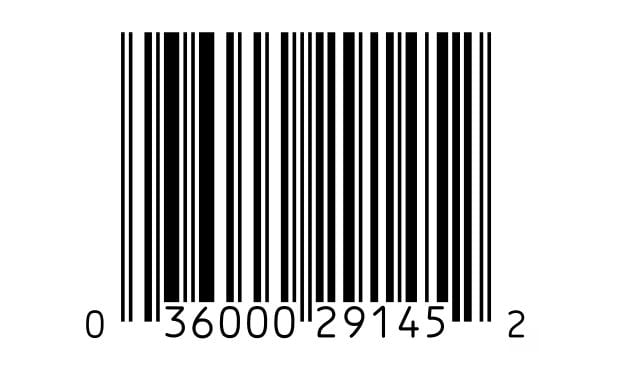
Happy Anniversary to the UPC Barcode!
Today, June 26, marks the 45th anniversary of the first Universal Product Code (UPC) barcode scan—a milestone that ushered in the modern shopping experience that we know today, and opened the door to more automation and efficiency in the supply chain. The ubiquitous black-and-white symbol represents continued supply chain industry collaboration that has helped propel global commerce forward in numerous ways.
Consider these key facts about the barcode and its impact:
- The barcode has stayed relevant far longer than some other technologies that made their debut in the 1970s, including the personal cassette player, the floppy disk, and the VCR.
- Conservative estimates place the impact of the UPC at $17 billion in savings to the grocery industry annually, according to PwC.
- The barcode is scanned 6 billion times around the world every day, according to GS1.
The simple act of scanning a barcode on a pack of Wrigley’s gum back in 1974 led to an easier shopping experience for the consumer. Using barcodes, stores gained automation, which significantly reduced checkout times and human error. For the supply chain world, a better and faster way to manage inventory was born. Companies streamlined the production line and warehouse operations, and created consistency in the way products were identified. Prior to having one standard UPC barcode, various industry groups had started planning to issue their own identification numbers to manufacturers, which had the potential to cause chaos as more modern distribution systems were being developed.
The barcode’s significance was potentially unfathomable back in 1974, but today it has become an essential part of the movement of goods and can continue to play a significant role in future innovations. Let’s look back at the barcode’s evolution and fast-forward with a glimpse into how the UPC is changing to meet new consumer demands.
History
The first barcode scan would not be possible without the vision of inventor, Norman Joseph Woodland, who first conceived of the idea drawing in the sand in 1949 while living in Miami Beach. A former Boy Scout who had been taught Morse Code, he drew a dot/dash pattern in the sand, forming the first bar and space pattern. Woodland and his research partner, Bernard Silver, knew that supermarkets were looking to incorporate more automation for checkout lines to keep up with the post-World War II population explosion. He believed a machine-readable barcode was the answer to reducing checkout times and human error. In 1952, he and Silver were issued a patent for the first machine-readable barcode and also began developing scanner technology to read the barcode. Woodland later joined IBM to develop the barcode over the next several years.

George Laurer
George Laurer, a scientist from IBM, is credited with creating the linear UPC barcode we see today, with input from Woodland. His design was selected by the grocery industry over one of Woodland’s designs shaped like a bull’s eye. The Uniform Product Code Council, later rebranded GS1, was named the administrator of barcode standards in 1974, and helped brand owners use barcodes and a numbering system (today known as GS1 Global Trade Item Numbers® (GTIN®) on all of their products to uniquely identify those items at point-of-sale, giving access to price information. This system also helped enhance inventory management to keep shelves stocked and allow for lower pricing due to gained efficiencies. Once the symbol was agreed upon, the group set guidelines to build an industry standard, and began testing of systems in actual store environments.
On June 26, 1974, the barcode made its debut at the checkout counter of the Troy, Ohio Marsh Supermarket. The first item scanned was a ten-pack of Wrigley’s gum, priced at 69 cents. The first scanning cashier at Marsh was Sharon Buchanan and the first “shopper” was Clyde Dawson, head of research and development for Marsh.
All involved in the events leading up to the historical moment did not know the impact of their creation. For example, at the barcode’s inception, it was thought that there would only be 6,000 numbers assigned and then the council would close up shop. Today, the UPC has grown in versatility to help solve supply chain challenges around the world.
Beyond the Point-of-Sale
At the heart of the barcode is the concept of unique identification, which is critical to the supply chain agility needed to meet the needs of today’s consumers. For manufacturers, distributors, retailers, foodservice operators, hospitals, and logistics partners, unique product identification is foundational to delivering on a promise to the consumer—which can include anything from product safety, fast delivery, and environmental friendliness. It is a common language that an organization’s internal operations can use to communicate with external partners’ systems—true interoperability is achieved to support consumer-facing objectives.
Driven in part by technology developments, these consumer expectations evolved quickly over the past four decades. The internet, smartphones and digital assistants have all put data right at the consumer’s fingertips, creating unprecedented access to reviews, ingredients and other key information that can influence them on their paths to purchasing a product. Consumer and retailer demands for product information, traceability, authentication, and the seamless facilitation of checkout and returns have extended well beyond the original price look-up function of the UPC.
As such, other more robust data carriers have joined the ranks of the UPC barcode to capture data in various settings.
Quick response (QR) codes can play an increasingly important role for empowered shoppers. These codes serve as bridges between the physical product and useful digital information such as allergens and nutritional information. For example, the SmartLabel transparency initiative leverages QR codes to provide consumers with direct access to standardized product information with the scan of a smart device.
Radio frequency identification (RFID) tags, which can hold more data about a product than a UPC barcode, allows companies to serialize products at the item level, leading to vastly improved inventory visibility for retailers. RFID offers serialized data so that an individual item, such as a single black, large-sized woman’s dress, can be accurately counted and read within a lot of 100 such dresses. RFID is also a key conduit of data exchange between many different types of “smart” systems, with applications ranging from the warehouse to the retail store to the home.
Two-dimensional GS1 DataMatrix barcodes look similar to QR codes – they contain many small, individual dots—and are revolutionizing industries like healthcare. When applied to products like vaccine syringes, these special barcodes create better efficiencies in place of error-prone manual processes. In a recent case study involving the Centers for Disease Control and Prevention pilot program, scanning 2D barcodes to verify life-saving vaccines led to 92% data accuracy per lot, compared with 84% using traditional entry methods like manual entry, drop-down menu, or a combination.
The Digital Future
Business is evolving rapidly, forcing industry to take a look at how the barcode can keep up with massive amounts of data communicated between businesses and to the consumer. Different barcode symbols will continue to evolve to carry more data but what is core to each data carrier—now or in the future— is unique identification. Once a product is identified with a barcode it is no longer just an item, it is something that has a known place in global commerce. This is going to be increasingly important as various technologies mature, including voice assistants, machine learning, and the Internet of Things.
For example, a Web-enabled barcode can provide consumers with a direct link to trustworthy product information by connecting products with an increasingly important digital identity. A new standard called GS1 Digital Link was ratified last year by a community of key industry stakeholders—just like the collaboration that took place 45 years ago on the UPC barcode. GS1 Digital Link upgrades the barcode’s capability to seamlessly connect products to their online information by embedding GTINs and other GS1 identifiers in web addresses. It is part of a system of emerging digital solutions designed to connect consumers to more trustworthy product information, images, and video. It is part of a system of emerging digital solutions designed to connect consumers to more trustworthy product information, images, and video.
Optical scanners are also being adopted by retail “first movers” to further speed the checkout process. By reading additional types of barcode symbols or not requiring one specific line-of-sight barcode scan, entire packages can be scanned at once, providing for greater efficiency.
There’s no limit to the possibilities. Barcodes, and the unique identification contained within them, are a precursor to a whole world of increased automation. Artificial intelligence, autonomous machines and other innovative technologies rely on standards – and identification standards are critical to this future where everything that can be connected will be connected. Across the supply chain, the same standards that power the barcode will continue to enable innovative delivery methods, increased product safety and transparency, and so much more.
Ultimately, the past 45 years are proof that standards are crucial for supply chain innovation to flourish. The technology world is offering mind-boggling new concepts at break-neck speed—the same principles that guided the successful launch of the UPC barcode will similarly guide the successful digital transformation of commerce.
Click here for the interview with George Laurer.









